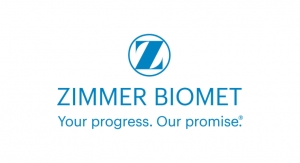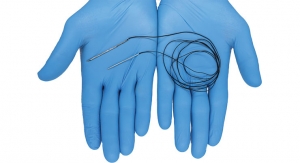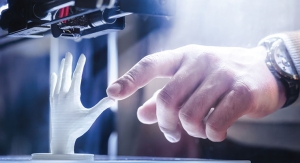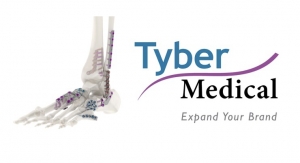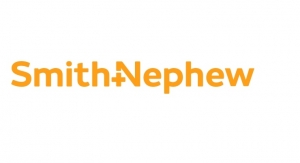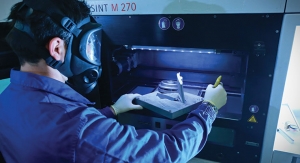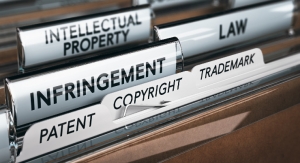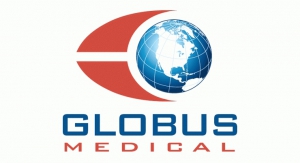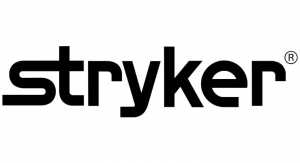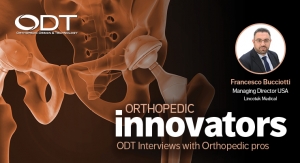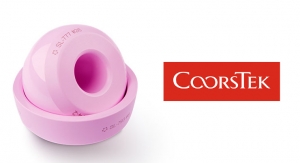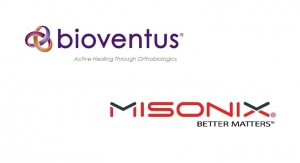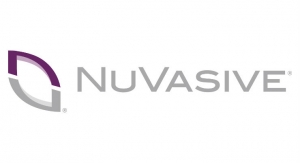Lucas Tatem, Technical Writer, Regulatory Affairs, MCRA LLC02.18.20
As the May 26 implementation for the European Medical Device Regulation (MDR) quickly approaches, a sense of urgency is affecting both medical device manufacturers and Notified Bodies (NBs). To assist relevant stakeholders through the process of implementing the MDR, the Medical Device Coordination Group (MDCG) has been releasing guidance documents that highlight critical changes from the Medical Device Directive (MDD). In December 2019, the MDCG released several guidance documents such as 2019-13, 2019-14, and 2019-15. These documents outline regulations related to NBs auditing manufacturers, the implementation of a new MDR coding system, and guidance specific to Class I medical device manufacturers, respectively.
This article provides medical device manufacturers who intend to commercialize in Europe with a comprehensive overview and key takeaways from these guidance documents, primarily focusing on the obligations they must fulfill when contracting with NBs under MDR requirements.
Background
Compared to the MDD, the MDR places a greater emphasis on a product lifecycle approach to safety, which will be enforced through stricter requirements regarding clinical data, transparency, and traceability. Consequently, the MDR’s scope will be applicable to all economic operators within a product’s supply chain (e.g., manufacturer, importer, distributor, authorized representative). This is important to note and emphasize for manufacturers that are not established within the European Union, since an increased number of regulations will apply to Authorized Representatives [legal persons or entities who perform tasks outlined in MDR Article 11(3) on behalf of manufacturers registered outside the EU]. The expanded scope of medical device regulations will now make it easier for an Authorized Representative to lose its accreditation. One of the most notable additions to manufacturers’ (and their Authorized Representatives’) responsibilities is the need to have a Person Responsible for Regulatory Compliance (PRRC) with certain documented expertise. Per Article 15 and MDCG 2019-15 guidance,1 “big and medium size enterprises will designate at least one person within their company who is responsible for regulatory compliance,” whereas “small and micro enterprises are required to have such a person permanently and continuously at their disposal.”
The updated responsibilities imposed on medical device manufacturers include increased transparency of technical information, diligence for maintaining up-to-date technical documentation, the need for providing appropriate clinical evidence, and more stringent requirements for maintaining and implementing Post-Market Surveillance (PMS) and Post-Market Clinical Follow-up (PMCF) plans.
Device manufacturers marketing or intending to market products in the EU must begin proactively assessing all aspects of their business to ensure that areas of deficiency—specifically related to MDR conformity—are identified and updatable in accordance with their search for appropriate NBs. When requesting quotes and timelines for certifying products, manufacturers should reach out to NBs who are not yet designated under the MDR to inquire about the status of their personal accreditation timeline. It is expected the great reduction in accredited NBs will become a bottleneck for the overwhelming volume of medical devices requiring CE mark re-certification.
Of the 57 NBs currently accredited under the MDD (as of January), only nine have received MDR designation.2 As more NBs receive accreditation, the backlog of devices awaiting the CE mark will diminish but manufacturers that urgently pursue MDR compliance will minimize their chances of having to remove products from the market. And while this applies to all medical device manufacturers, it is most relevant to those who do not meet the criteria for the extended marketing period for devices currently certified under the MDD (qualifying devices can remain on the market until their MDD certificate expires, or no later than May 26, 2024). As stated earlier, any manufacturer who does not receive CE certification before May 26, or by the conclusion of an extended transition period (per Article 120 of the MDR), must remove their products from the EU market—an obviously unfavorable consequence with serious economic repercussions.
MDCG 2019-14: Implementation of the MDR Coding System
The scope of the MDCG 2019-14 document3 includes the introduction to, and explanation of a new product-coding system that characterizes devices by design, intended purpose, manufacturing processes, and technologies. The implementation of these codes will ensure NBs and the staff conducting conformity assessments are fully competent for the devices they assess, and that NBs have enough resources to conduct conformity assessment activities.
Briefly, under the MDD, there were 55 product codes and nine horizontal codes for medical devices but the new MDR codes described in the 2019-14 guidance document reduces the number of product codes to 44 and increases the number of horizontal codes to 27. An overview of the new coding system can be found in the guidance document.
The guidance does not explicitly
absolve or require that manufacturers be responsible for providing NBs with all applicable MDA/MDN, MDS and MDT codes. MDR Section 4.3 of Annex VII discusses the application review and contract between an NB and manufacturer and requires manufacturers to provide all information pertaining to the type of device and technologies (discussed in Annex II) subject to conformity assessments (discussed in Annexes IX to XI). While this information is integral to assigning the appropriate codes, the responsibilities of the manufacturer remain rather ambiguous in this context.
Increased Requirements for Clinical Data
While requiring medical device manufacturers to collect and present sufficient clinical data for demonstrating compliance with clinical requirements is nothing new, the MDR mandates (Article 61 and Part A of Annex XIV) place greater emphasis on thoroughly collecting clinical data that represents the device lifetime. The most notable implication is certain cases of Class I devices now require an NB to review their clinical evaluation report (CER) prior to gaining a CE mark. Please note the previously mentioned “certain cases” refers to Class I device manufacturers that possess a measuring function (Class Im), are provided sterile (Is) or are reusable (Ir). The amount of clinical data needed for a device depends on several factors such as inherent risk profile, intended use and patient population, length of time on the market, and claimed benefits.
Special Consideration for Class I Device Manufacturers
While all medtech companies are required to make internal changes to adapt and comply with the MDR’s statutory legislations, Class I device manufacturers are at the greatest risk of having products removed from the market due to their greatly increased responsibilities. Unlike manufacturers of higher risk devices, Class I device makers, whose products will not be reclassified to a higher risk category (including class Im, Is, and Ir) under the MDR, cannot benefit from the extended transition period. Additionally, some Class I device manufacturers may not even be aware of their increased requirements (e.g., clinical data and/or NB involvement) simply because they previously did not need pre-market approval from an NB under the MDD. Thus, Class I manufacturers must be cognizant of this duality and update their operational procedures to fulfill their new MDR responsibilities.
One of the greatest areas of concern for Class I manufacturers should be ensuring their products have not been up-classified to a higher-risk category. Class I manufacturers should consult the criteria presented in Annex VIII of the MDR. As mentioned earlier, Class I device makers are required to implement and continuously update a QMS plan under the MDR. To ensure MDR compliance when implementing or updating a QMS plan, companies should adhere to the guidance outlined in EN ISO 13485:2016 in addition to applying the procedures outlined in Chapters I and III of Annex IX, or Part A of Annex XI of the MDR.
Insider Look at Audits from Notified Bodies
To preface, the primary audience for the MDCG 2019-13 guidance document4 is NBs, since the central topics discussed are the tasks these entities must perform when drafting contracts with a manufacturer (or Authorized Representative) as well as sampling criteria for audits and assessments of technical documentation. With that being said, the document offers manufacturers (primarily for Class IIa/IIb devices) an inside look at the criteria the NBs will use when assessing technical documentation and what to generally expect during planned and unplanned audits.
All devices except simple Class I (simple meaning non-sterile, non-reusable, and non-measuring) must be submitted to an NB for a full QMS assessment (resulting in a QMS certificate) and require subsequent surveillance of technical documentation and PMS data. Sampling plans must be drafted per Annexes II and III and include the dates and status for all planned assessments as well as the device range covered during the QMS certificate’s period of validity (maximum of five years). Per section 3.5 of Annex IX, NBs must assess technical documentation at least once per year. Further, the dreaded “unannounced audit” will be reduced from once every three years under the MDD to once every five years under the MDR.
The depth and extent of technical documentation assessments is not correlated with device risk, meaning Class IIa and Class IIb devices will be assessed against the same general safety and performance requirements as Class III devices. However, risk classification dictates the number of unique devices sampled during audits. Technical documentation must be assessed for at least one representative Class IIa product per each device category (the relevant MDA/MDN code) whereas technical documentation must be assessed for at least one representative Class IIb device per each generic product group (the relevant fourth level of the EMDN—representing a set of devices with the same or similar intended purpose) during the QMS certificate’s validity period. Note that “representative device” refers to a unique UDI-DI code.
Section 2.3 of Annex IX outlines the characteristics factored into determining levels of inherent device risk used for prioritizing samples. This means novel devices will typically be selected over well-established technologies (unless specific concerns arise regarding the latter).
It is expected that 15 percent5 of the devices from each category and each generic product group will be sampled during the QMS certificate’s period of validity. It is important to note that this number is not a fixed value and may vary depending on the number of devices covered under the certificate and previous number of certification cycles.
The following risk classifications are exemptions to the above-mentioned sampling procedures:
Conclusion
As the MDR’s implementation date quickly approaches, medical device manufacturers and/or their Authorized Representatives operating in the EU must be vigilant of their changing responsibilities and must act accordingly to ensure all aspects of their operations comply with the new regulation. It is highly recommended that manufacturers consult the MDR device classification rules outlined in Annex VIII and begin reviewing the relevant requirements for conducting clinical investigations and evaluations per Article 61 and Part A of Annex XIV, in addition to staying updated on the latest MDCG guidance documents (found online in the EU NANDO Database).6 It is worth not only reviewing medical device manufacturer-specific guidance, but also rules intended for NBs because they will provide useful information on how to most effectively prepare technical documentation for submissions, prepare for audits, and overall, more effectively navigate the regulatory pathway to market new devices.
References
Lucas Tatem is a technical writer, Regulatory Affairs at MCRA LLC, primarily focusing on developing international regulatory strategies and submissions to European Notified Bodies, namely Clinical Evaluation Reports (CERs), which primarily focus on orthopedic devices. He attended Clemson University and graduated with a master’s degree in biomedical engineering with a concentration in biomaterials.
This article provides medical device manufacturers who intend to commercialize in Europe with a comprehensive overview and key takeaways from these guidance documents, primarily focusing on the obligations they must fulfill when contracting with NBs under MDR requirements.
Background
Compared to the MDD, the MDR places a greater emphasis on a product lifecycle approach to safety, which will be enforced through stricter requirements regarding clinical data, transparency, and traceability. Consequently, the MDR’s scope will be applicable to all economic operators within a product’s supply chain (e.g., manufacturer, importer, distributor, authorized representative). This is important to note and emphasize for manufacturers that are not established within the European Union, since an increased number of regulations will apply to Authorized Representatives [legal persons or entities who perform tasks outlined in MDR Article 11(3) on behalf of manufacturers registered outside the EU]. The expanded scope of medical device regulations will now make it easier for an Authorized Representative to lose its accreditation. One of the most notable additions to manufacturers’ (and their Authorized Representatives’) responsibilities is the need to have a Person Responsible for Regulatory Compliance (PRRC) with certain documented expertise. Per Article 15 and MDCG 2019-15 guidance,1 “big and medium size enterprises will designate at least one person within their company who is responsible for regulatory compliance,” whereas “small and micro enterprises are required to have such a person permanently and continuously at their disposal.”
The updated responsibilities imposed on medical device manufacturers include increased transparency of technical information, diligence for maintaining up-to-date technical documentation, the need for providing appropriate clinical evidence, and more stringent requirements for maintaining and implementing Post-Market Surveillance (PMS) and Post-Market Clinical Follow-up (PMCF) plans.
Device manufacturers marketing or intending to market products in the EU must begin proactively assessing all aspects of their business to ensure that areas of deficiency—specifically related to MDR conformity—are identified and updatable in accordance with their search for appropriate NBs. When requesting quotes and timelines for certifying products, manufacturers should reach out to NBs who are not yet designated under the MDR to inquire about the status of their personal accreditation timeline. It is expected the great reduction in accredited NBs will become a bottleneck for the overwhelming volume of medical devices requiring CE mark re-certification.
Of the 57 NBs currently accredited under the MDD (as of January), only nine have received MDR designation.2 As more NBs receive accreditation, the backlog of devices awaiting the CE mark will diminish but manufacturers that urgently pursue MDR compliance will minimize their chances of having to remove products from the market. And while this applies to all medical device manufacturers, it is most relevant to those who do not meet the criteria for the extended marketing period for devices currently certified under the MDD (qualifying devices can remain on the market until their MDD certificate expires, or no later than May 26, 2024). As stated earlier, any manufacturer who does not receive CE certification before May 26, or by the conclusion of an extended transition period (per Article 120 of the MDR), must remove their products from the EU market—an obviously unfavorable consequence with serious economic repercussions.
MDCG 2019-14: Implementation of the MDR Coding System
The scope of the MDCG 2019-14 document3 includes the introduction to, and explanation of a new product-coding system that characterizes devices by design, intended purpose, manufacturing processes, and technologies. The implementation of these codes will ensure NBs and the staff conducting conformity assessments are fully competent for the devices they assess, and that NBs have enough resources to conduct conformity assessment activities.
Briefly, under the MDD, there were 55 product codes and nine horizontal codes for medical devices but the new MDR codes described in the 2019-14 guidance document reduces the number of product codes to 44 and increases the number of horizontal codes to 27. An overview of the new coding system can be found in the guidance document.
The guidance does not explicitly
absolve or require that manufacturers be responsible for providing NBs with all applicable MDA/MDN, MDS and MDT codes. MDR Section 4.3 of Annex VII discusses the application review and contract between an NB and manufacturer and requires manufacturers to provide all information pertaining to the type of device and technologies (discussed in Annex II) subject to conformity assessments (discussed in Annexes IX to XI). While this information is integral to assigning the appropriate codes, the responsibilities of the manufacturer remain rather ambiguous in this context.
Increased Requirements for Clinical Data
While requiring medical device manufacturers to collect and present sufficient clinical data for demonstrating compliance with clinical requirements is nothing new, the MDR mandates (Article 61 and Part A of Annex XIV) place greater emphasis on thoroughly collecting clinical data that represents the device lifetime. The most notable implication is certain cases of Class I devices now require an NB to review their clinical evaluation report (CER) prior to gaining a CE mark. Please note the previously mentioned “certain cases” refers to Class I device manufacturers that possess a measuring function (Class Im), are provided sterile (Is) or are reusable (Ir). The amount of clinical data needed for a device depends on several factors such as inherent risk profile, intended use and patient population, length of time on the market, and claimed benefits.
Special Consideration for Class I Device Manufacturers
While all medtech companies are required to make internal changes to adapt and comply with the MDR’s statutory legislations, Class I device manufacturers are at the greatest risk of having products removed from the market due to their greatly increased responsibilities. Unlike manufacturers of higher risk devices, Class I device makers, whose products will not be reclassified to a higher risk category (including class Im, Is, and Ir) under the MDR, cannot benefit from the extended transition period. Additionally, some Class I device manufacturers may not even be aware of their increased requirements (e.g., clinical data and/or NB involvement) simply because they previously did not need pre-market approval from an NB under the MDD. Thus, Class I manufacturers must be cognizant of this duality and update their operational procedures to fulfill their new MDR responsibilities.
One of the greatest areas of concern for Class I manufacturers should be ensuring their products have not been up-classified to a higher-risk category. Class I manufacturers should consult the criteria presented in Annex VIII of the MDR. As mentioned earlier, Class I device makers are required to implement and continuously update a QMS plan under the MDR. To ensure MDR compliance when implementing or updating a QMS plan, companies should adhere to the guidance outlined in EN ISO 13485:2016 in addition to applying the procedures outlined in Chapters I and III of Annex IX, or Part A of Annex XI of the MDR.
Insider Look at Audits from Notified Bodies
To preface, the primary audience for the MDCG 2019-13 guidance document4 is NBs, since the central topics discussed are the tasks these entities must perform when drafting contracts with a manufacturer (or Authorized Representative) as well as sampling criteria for audits and assessments of technical documentation. With that being said, the document offers manufacturers (primarily for Class IIa/IIb devices) an inside look at the criteria the NBs will use when assessing technical documentation and what to generally expect during planned and unplanned audits.
All devices except simple Class I (simple meaning non-sterile, non-reusable, and non-measuring) must be submitted to an NB for a full QMS assessment (resulting in a QMS certificate) and require subsequent surveillance of technical documentation and PMS data. Sampling plans must be drafted per Annexes II and III and include the dates and status for all planned assessments as well as the device range covered during the QMS certificate’s period of validity (maximum of five years). Per section 3.5 of Annex IX, NBs must assess technical documentation at least once per year. Further, the dreaded “unannounced audit” will be reduced from once every three years under the MDD to once every five years under the MDR.
The depth and extent of technical documentation assessments is not correlated with device risk, meaning Class IIa and Class IIb devices will be assessed against the same general safety and performance requirements as Class III devices. However, risk classification dictates the number of unique devices sampled during audits. Technical documentation must be assessed for at least one representative Class IIa product per each device category (the relevant MDA/MDN code) whereas technical documentation must be assessed for at least one representative Class IIb device per each generic product group (the relevant fourth level of the EMDN—representing a set of devices with the same or similar intended purpose) during the QMS certificate’s validity period. Note that “representative device” refers to a unique UDI-DI code.
Section 2.3 of Annex IX outlines the characteristics factored into determining levels of inherent device risk used for prioritizing samples. This means novel devices will typically be selected over well-established technologies (unless specific concerns arise regarding the latter).
It is expected that 15 percent5 of the devices from each category and each generic product group will be sampled during the QMS certificate’s period of validity. It is important to note that this number is not a fixed value and may vary depending on the number of devices covered under the certificate and previous number of certification cycles.
The following risk classifications are exemptions to the above-mentioned sampling procedures:
- Class IIb implantable devices are exempt from sampling, since the MDR requires all devices with this classification to be assessed.
- Class IIb active devices (administer or remove medicinal product) are subject to clinical evaluation, therefore, they all must be assessed.
Conclusion
As the MDR’s implementation date quickly approaches, medical device manufacturers and/or their Authorized Representatives operating in the EU must be vigilant of their changing responsibilities and must act accordingly to ensure all aspects of their operations comply with the new regulation. It is highly recommended that manufacturers consult the MDR device classification rules outlined in Annex VIII and begin reviewing the relevant requirements for conducting clinical investigations and evaluations per Article 61 and Part A of Annex XIV, in addition to staying updated on the latest MDCG guidance documents (found online in the EU NANDO Database).6 It is worth not only reviewing medical device manufacturer-specific guidance, but also rules intended for NBs because they will provide useful information on how to most effectively prepare technical documentation for submissions, prepare for audits, and overall, more effectively navigate the regulatory pathway to market new devices.
References
- “Guidance Notes for Manufacturers of Class I Medical Devices” MDCG Guidance. December 2019.
- European Commission Nando Database with Notified Bodies designated under EU MDR 2017/745. bit.ly/2tqQYF7
- “Explanatory Note on MDR Codes” MDCG Guidance. December 2019.
- “Guidance on Sampling of MDR Class IIa/Class IIb and IVDR Class B/Class C Devices for the Assessment of the Technical Documentation” MDCG Guidance. December 2019.
- “Guidance on Sampling of MDR Class IIa/Class IIb and IVDR Class B/Class C Devices for the Assessment of the Technical Documentation” MDCG Guidance. December 2019.
- European Commission Guidance in the Nando Database. bit.ly/398rQlN
Lucas Tatem is a technical writer, Regulatory Affairs at MCRA LLC, primarily focusing on developing international regulatory strategies and submissions to European Notified Bodies, namely Clinical Evaluation Reports (CERs), which primarily focus on orthopedic devices. He attended Clemson University and graduated with a master’s degree in biomedical engineering with a concentration in biomaterials.


